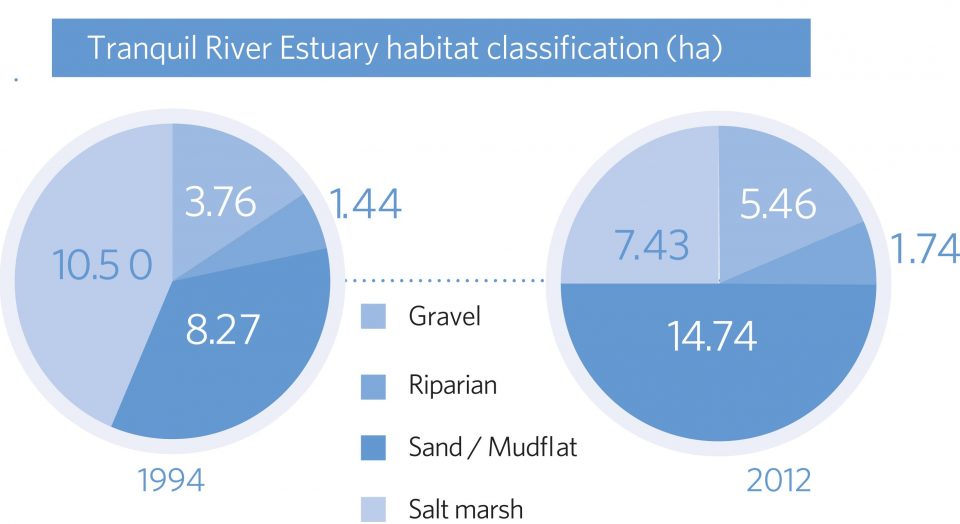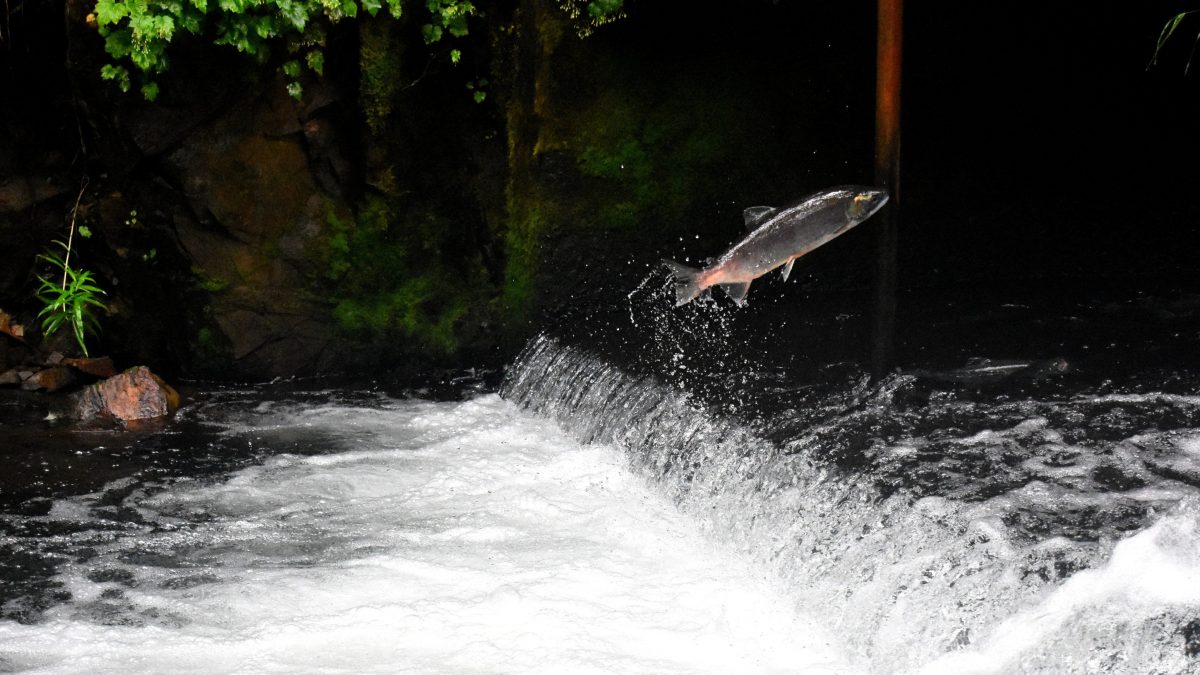July 2016 was the hottest year on record globally. As air temperatures rise in the Pacific Northwest, water levels in our rivers are declining. Rainfall precipitation is now higher in cooler seasons, causing more frequent flooding and increased erosion in salmon spawning habitat. These conditions, together with other stressors, are driving down the number of salmon returning to rivers in Clayoquot Sound.
Over the next 10 years, salmon will likely become even more vulnerable to threats such as increased fishing, and increased exposure to predation, marine contaminants, diseases, and invasive species. In an effort to restore salmon habitat and support salmon recovery, local organizations have formed the Clayoquot Sound Salmon Roundtable to develop a collaborative stewardship approach.

Over the last 10 years, the number of salmon returns, for all species, have declined in the rivers of Clayoquot Sound. In the few years that show an increase, local fish hatcheries enhanced salmon to prevent population extinction. But government funding for salmon enhancement ceased in subsequent years.
Twenty years of salmon habitat restoration in Lost Shoe Creek is showing results. The Central Westcoast Forest Society’s salmon smolt trap monitoring indicates that riparian ecosystem restoration may have a positive impact on coho salmon returns.

Estuaries provide important feeding habitat for juvenile salmon as they transition from the river to the ocean. But more frequent spring flooding is contributing to a loss of this critical habitat. Between 1994 and 2012, the area of salt marsh habitat located at the mouth of Tranquil River has decreased by nearly 30% due to washouts.

About these findings
This article is an excerpt from Clayoquot Biosphere’s Trust 2016 Vital Signs report, a biennial report that brings together social, cultural, economic, and environmental information to tell a story about the Clayoquot Sound Biosphere Reserve region and measures the vitality of our communities.
The full report is available online.
Sources
- National Centers for Environmental Information, Global Analysis, July 2016, ncdc.noaa.gov
- Crozier, Lisa, Impacts of Climate Change on Salmon of the Pacific Northwest: a review of the scientific literature published in 2014. Fish Ecology Division, Northwest Fisheries Science Division, 2015.
- Terry Smith, Mean Annual Rainfall (mm) collected at Ucluelet-Kennedy Station, 1963-2016.
- Government of Canada, Fisheries and Ocean Canada, New Salmon Escapement Database System (NuSEDS).
- Central Westcoast Forest Society, Kennedy Watershed Restoration Project, 2014-2015 Completion Report; Smulders,M., Central Westcoast Forest Society, Lost shoe Creek Smolt Trap Survey Data 2007-2016.
- Abbot, R., M. deVissar, M. Wright, Wild Salmon Policy strategy 2: Fish Habitat status report for the Tranquil River watershed. Draft, 2016. (unpublished).
Photo by Drew Farwell on Unsplash
